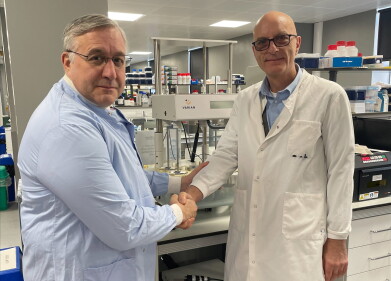News
What is Cancer Modelling?
Oct 31 2021
In the UK alone, cancer claims more than 166,000 lives every year. Scientists are continually on the search for new ways to detect, diagnose and treat cancer, with the ultimate goal to save lives and increase life expectancy. Cancer modelling has emerged as an invaluable tool, using mathematical concepts and tools to predict how the disease will affect a patient. As well as predicting the development and progression of cancers in individual patients, modelling is used to optimise treatment plans and dosages strategies.
Read on to find out more about cancer modelling, what it involves and what’s next for the field:
The advent of ‘in silico’ techniques
Over the past decade, ‘in silico’ techniques - which rely on computer technologies and simulation - have become increasingly popular in the oncology field. By combining traditional ‘in vitro’ and ‘in vivo’ methods with next-generation ‘in silico’ techniques, cancer researchers have unlocked novel insight into the disease.
Authors Sophie Bekisza and Liesbet Gerisabc introduce a range of mathematical models developed especially for clinical applications in a recent article published in the Journal of Computational Science.
“In conclusion, the symbiotic approach, mixing in vitro, in vivo and in silico models, is of great interest in the oncology domain,” reads the report titled ‘Cancer modelling: From mechanistic to data-driven approaches, and from fundamental insights to clinical applications’.
“In basic cancer research, a plethora of mathematical and computational tools is available. They have shown to be able to contribute to achieving a better understanding of several aspects related to cancer, to the generation of new hypotheses and predictions, and to guiding scientists towards the most (more) impactful experiments.”
Improving treatment plans
Mathematical modelling is also being used to improve cancer treatment plans and optimise drug administration regimes. In principle, it can be used to analyse millions of different treatment options. This includes the analysis of variables such as drug combinations and dose schedules.
“Drug delivery schedules are key factors in the efficacy of cancer therapies, and mathematical modelling of population dynamics and treatment responses can be applied to identify better drug administration regimes as well as provide mechanistic insights,” reads the abstract of a recent article published in the journal Cell. “To capitalise on the promise of this approach, the cancer field must meet the challenges of moving this type of work into clinics.”
Making leaps in cell and gene therapy
Cancer modelling is making big waves in the cell and gene therapy arena, with a partnership between Japanese-based biotechnology company Takara Bio and BioNTech Cell & Gene Therapies GmbH set to revolutionise the field. The agreement will see the proprietary RetroNectin® method used to produce cell and gene therapy products that use the T cells of cancer patients to treat tumours.
Find out more about the exciting new partnership in ‘Supply and Licence Agreement heralds way for Personalised Cancer Treatments’. Drug delivery schedules are key factors in the efficacy of cancer therapies, and mathematical modeling of population dynamics and treatment responses can be applied to identify better drug administration regimes as well as provide mechanistic insights. To capitalize on the promise of this approach, the cancer field must meet the challenges of moving this type of work into clinics.Drug delivery schedules are key factors in the efficacy of cancer therapies, and mathematical modeling of population dynamics and treatment responses can be applied to identify better drug administration regimes as well as provide mechanistic insights. To capitalize on the promise of this approach, the cancer field must meet the challenges of moving this type of work into clinics.Drug delivery schedules are key factors in the efficacy of cancer therapies, and mathematical modeling of population dynamics and treatment responses can be applied to identify better drug administration regimes as well as provide mechanistic insights. To capitalize on the promise of this approach, the cancer field must meet the challenges of moving this type of work into clinics.Drug delivery schedules are key factors in the efficacy of cancer therapies, and mathematical modeling of population dynamics and treatment responses can be applied to identify better drug administration regimes as well as provide mechanistic insights. To capitalize on the promise of this approach, the cancer field must meet the challenges of moving this type of work into clinics.
Digital Edition
Lab Asia 32.2 April
April 2025
Chromatography Articles - Effects of small deviations in flow rate on GPC/SEC results Mass Spectrometry & Spectroscopy Articles - Waiting for the present to catch up to the future: A bette...
View all digital editions
Events
Apr 09 2025 Tokyo, Japan
Apr 22 2025 Hammamet, Tunisia
Apr 22 2025 Kintex, South Korea
Analytica Anacon India & IndiaLabExpo
Apr 23 2025 Mumbai, India
Apr 23 2025 Moscow, Russia



















